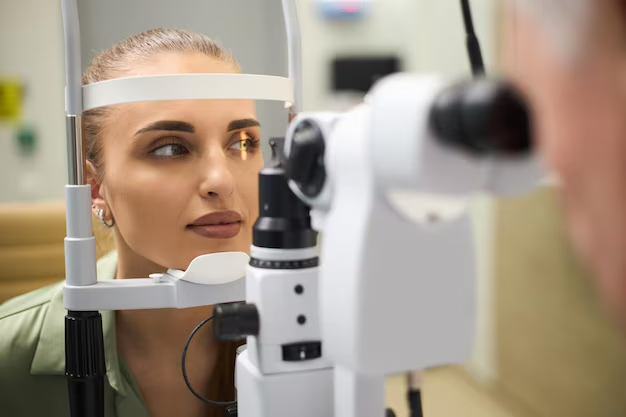The Quest to Understand and Spell Cataracts Correctly
Navigating through the vast sea of medical terminology isn't always straightforward. One term that often confounds people is "cataracts." Whether you're searching for information about cataract surgery or simply verifying the spelling, understanding this common eye condition is crucial for clear and effective communication. This article will demystify cataracts, explore related subtopics, and dive deep into the why and how of this ocular condition.
What Are Cataracts?
A cataract is a clouding of the normally clear lens of the eye. For people who have cataracts, seeing through cloudy lenses is a bit like looking through a frosty or fogged-up window. It can hinder a person's ability to read, drive, especially at night, or see the expressions on a friend's face.
Origins and Meanings
The word "cataract" itself has fascinating origins. It stems from the Latin term "cataracta," meaning a waterfall. This is aptly descriptive, as the cloudiness in the eye resembles the appearance of white water rushing down.
Common Symptoms of Cataracts
- Blurry Vision: One of the first signs is often a subtle blurring of vision.
- Increased Sensitivity to Light and Glare: Bright sunlight may feel blinding.
- Difficulty Seeing at Night: Night vision may become progressively troublesome.
- Frequent Prescription Changes: A rapid change in eyeglass or contact lens prescriptions can occur.
How Do You Spell Cataracts?
It's common to see variances and misspellings in medical terms, but clarity is essential in health discussions. "Cataracts" is spelled C-A-T-A-R-A-C-T-S. Keeping this spelling consistent ensures a clear understanding in communications related to eye health.
Why Correct Spelling Matters
Spelling accuracy is crucial not just for healthcare professionals, but also for patients seeking information. Accurate spelling helps:
- Facilitate Better Communication: Between healthcare providers and patients.
- Improve Search Results: For online health inquiries.
- Ensure Proper Understanding: Avoiding confusion with other medical terms.
Causes and Risk Factors of Cataracts
Understanding why cataracts form can be as important as knowing how to spell it correctly. Age is the primary factor, but there are several others:
- Age: Cataracts often develop as part of the aging process.
- Trauma: Injury to the eye can precipitate cataract formation.
- UV Exposure: Prolonged exposure to ultraviolet light increases risk.
- Health Conditions: Conditions like diabetes can accelerate cataract development.
- Lifestyle Factors: Smoking and excessive alcohol use are contributing factors.
The Process of Diagnosing Cataracts
Typically, an eye examination will detect cataracts. Optometrists and ophthalmologists use several tests to assess eye health:
- Visual Acuity Test: Uses an eye chart to measure sight clarity.
- Slit-Lamp Examination: Provides a magnified view of the structures at the front of your eyes.
- Retinal Exam: After dilation, the retina's health can be assessed.
Treatment Options
While spelling "cataracts" is straightforward, navigating treatment options might seem less so. The primary treatment is surgical replacement of the cloudy lens with a clear artificial lens—a procedure known for its effectiveness and safety.
Non-Surgical Interventions
In early stages, cataracts may not significantly impair vision. In such cases, stronger lighting and updated eyeglasses can help manage symptoms. However, surgery becomes inevitable for more advanced cataracts that limit daily activities.
Surgical Procedure
Cataract surgery is one of the most common surgeries performed worldwide and involves:
- Phacoemulsification: Ultrasound waves break up the clouded lens, which is then vacuumed out.
- Artificial Lens Insertion: A clear, intraocular lens replaces the old lens.
Preventions and Lifestyle Adjustments
Though some risk factors like age are unavoidable, many others can be mitigated with lifestyle choices:
- Wear Sunglasses: Protect eyes from UVB rays to delay cataract development.
- Healthy Diet: Rich in vitamins C and E, they promote eye health.
- Regular Eye Exams: These can identify cataracts or other eye problems early.
- Quit Smoking: Reduces risk for cataracts and enhances overall health.
- Limit Alcohol: Moderation can decrease risk factors related to cataracts.
Navigating Misconceptions About Cataracts
Many people have misconceptions about cataracts. Here are some common myths dispelled:
- Cataracts Are a Skin Growth: Cataracts are within the eye, not an external growth.
- They Affect Only the Elderly: While more common with age, young people can also develop cataracts.
- Cataracts Can Be Cured with Glasses: While they can assist in early stages, surgery is the only cure.
Key Takeaways for Understanding Cataracts 📝
- Spelling: Always remember, it's "cataracts" - C-A-T-A-R-A-C-T-S.
- Symptoms: Regular eye exams are crucial, especially if experiencing cloudy vision.
- Causes: Beyond age, consider lifestyle and health as factors.
- Treatment: Surgery remains highly effective and is routine.
- Prevention: UV protection and a healthy lifestyle can delay the onset.
By understanding cataracts not just as a clinical condition but as part of broader health literacy, individuals can empower themselves to make informed decisions. Whether you're aiming to understand more about treatment options or simply verifying the spelling for a research paper, the knowledge of cataracts unlocks more than just medical jargon—it's a step toward better eye health.
